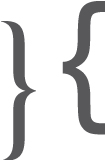
An investigation was conducted into what emotional and intellectual tones teens were most frequently using, how they were supporting/communicating those tones, and which tones were being most frequently misunderstood—within a text-based communication environment.
The purpose was to determine which tones (based on frequency of use and frequency of misunderstanding) would benefit most from new punctuation marks to clarify meaning.
Data collected represents the results of a survey of a simple random sample of approximately 10% of an urban english-speaking high school in Winnipeg. Manitoba, Canada that has a total student population of 1250. As teens are frequently early adopters of technology and softwares (apps etc.) insight into their habits (or their perception of habits) was a likely area to investigate. This demographic is also a tempting target to encourage adoption of new digital traditions.
Take the survey for yourself and contribute to our knowledge base.
Request the full data at get.the.point.me@gmail.com or use the contact form.
As a result of the data collected from the survey, nine specific emotional and intellectual tones—out of the seventeen offered as options—emerged as being most frequently used by the participants (at least once a day); joking/humor, sarcasm, questions/inquiry, happy, thanks/gratitude, interest, apology/sorry, excitement, confused. To maintain result integrity and to better measure trends, the sample was adjusted by establishing a threshold of >14% and by removing outliers.
Those same nine tones were reported (from 16%–36%) to have been misunderstood ‘at least once’ or ‘more than once’ along either end of the communication spectrum (sending and receiving). In fact all seventeen tones were reported to have been mis-communicated ‘at least once’ or ‘more than once’ by anywhere from 15%–36% of respondents (depending on tone). It is probable to speculate that those incidences are likely under-reported due to a failure of recollection, and perhaps lack of knowledge of when miscommunication had occurred on the recipients’ end.
With miscommunication confirmed among all nine of the most frequently expressed tones, the next factor that was examined was how these tones were being supported within a text-based environment. With two legitimate punctuation marks available to provide affective clues, both the exclamation mark (17%–61% depending on tone) and question mark (20%–64% depending on tone) are being used frequently and often across very diverse tones. High emoticon use (10%–63% depending on tone) also points to efforts to clarify meaning within a computer-mediated environment.
Yet, even though punctuation mark and emoticon use is robust, miscommunication is frequent. This persistent lack of clarity suggests that the methods currently available are inadequate, supporting the theory that a consistent and common implementation of well-positioned marks has the potential to generate greater clarity in our communications across all text-based exchange